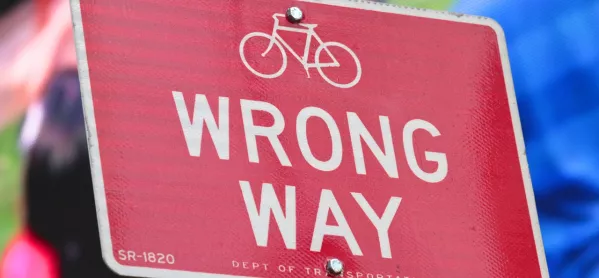- Home
- The multiple problems with the use of the word ‘sensory’
The multiple problems with the use of the word ‘sensory’

What do you think the word “sensory” means when it is used in schools?
Working in special education, I have seen the word used to describe myriad activities, objects and places, but I have often noticed an absence of considered learning attached to the teaching it is being used to describe.
I can recall a colleague explaining that they were “doing sensory” with a pupil. This involved sharing an array of interesting objects, but, probing deeper, it wasn’t clear that there was a real plan for the learning that was due to take place.
Quick read: The science of multisensory learning
Quick listen: What you need to know about executive function
Want more articles like this? Join our Tes Teaching and Learning Facebook group
I have also seen sensory rooms full of pupils, with bright lights firing, a screen playing host to a children’s TV show, loud music and an array of toys. How can these spaces - spaces rich with opportunity and potential - play host to learning when used in such a way?
Furthermore, using the term “sensory play” without any related learning objectives runs the very serious risk of it becoming free time.
Learning losses
Crucially, in all of these examples, our students miss out on their learning; becoming passengers in their day-to-day schooling as they are led aimlessly down a sensory garden path.
So let’s define our terms.
When we think of the word “sensory”, what, specifically, are we talking about?
The dictionary definition of “sensory” reads: “Relating to sensation or the physical senses; transmitted or perceived by the senses.”
As such, we are talking about how humans interpret the world in all of its various, layered and complicated ways. Quite literally, the word refers to the whole gamut of the perceived human physical experience.
Sensory needs
I should make it clear here that it is a fact that there will be many students who will require specialist teaching and learning in developing skills related to their senses. This includes targeted visual perception learning, tactile play and auditory discrimination activities as some basic examples.
These strands of learning form the backbone of our school’s Early Development and Fundamental Skills curricula, which I have previously written about.
Furthermore, I would hope that a multisensory approach to learning would be a basic expectation in all schools, given its potential to inspire the students in our classrooms (see also this recent Focus On in Tes).
Different approach
However, to use the word “sensory” to describe very specific, targeted areas of learning does a disservice to the complex thought and analysis that must go into planning the education for the students for whom these areas are a priority.
Instead of using the word “sensory”, it would be more helpful to think about how or what we are expecting each student to experience or learn within the context of the activities we have planned for them.
This way, we eliminate the risk of providing a passive activity where things are being done to our students and promote collaborative experiences where we are sharing and learning things together.
Sensory stories
Take a sensory story as one example. I would argue that for any story to be successful, it needs to excite the senses in a number of ways.
This could include sound effects where a pupil matches the audio clips they hear to corresponding photographs to develop their auditory discrimination skills. Perhaps a light toy could be used to symbolise the sun, with a pupil challenged to track its movement across a horizontal or vertical trajectory in line with their visual perception targets.
Alongside this, perhaps we could use smell pots that relate to objects encountered in the tale when working with a pupil to develop their communication strategies to ask for “more”.
By normalising exciting experiences that fire the senses, and by showing a greater specificity about the learning outcomes we expect from these activities, it renders the term “sensory” redundant.
Inclusive education
In this way, we are creating inclusive situations and environments in which a diverse group of learners can work towards their own challenging learning objectives simultaneously.
This approach places a greater onus on the adults supporting the students, to know the educational priorities of their young people thoroughly, rather than assuming we’re doing something specialist because we prefaced the activity with the word “sensory”.
Furthermore, given that some children with additional needs require carefully structured teaching in order to learn the labels of simple objects, how helpful is it that we then name a number of seemingly disparate objects and experiences using the same word?
When the commonality between the sensory room, sensory garden, sensory play, sensory stories and sensory circuits is the use of the senses - a complicated abstract notion in and of itself - how does the use of the word “sensory” meaningfully describe what our students could expect to face in each location or activity?
Ditch the label
At our school, we have agreed that in place of the word “sensory”, we will always strive to be specific about the nature of the activity and, most importantly, the skills and learning that we are planning to teach and deliver.
When you next encounter the word “sensory” in your school, take the time to reflect on the specifics of the learning that the word describes and whether there might be a more accurate descriptor that does justice to the depth of thought that goes into providing stimulating and challenging educational opportunities for your students.
Craig Clarke is deputy headteacher at Bardwell School in Oxfordshire
Keep reading for just £1 per month
You've reached your limit of free articles this month. Subscribe for £1 per month for three months and get:
- Unlimited access to all Tes magazine content
- Exclusive subscriber-only stories
- Award-winning email newsletters

